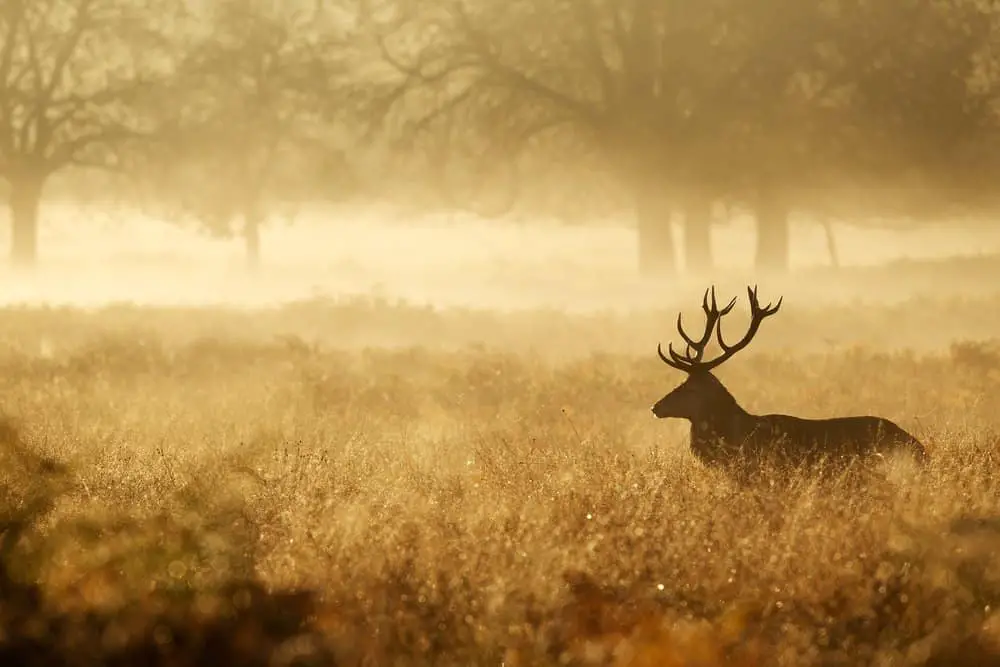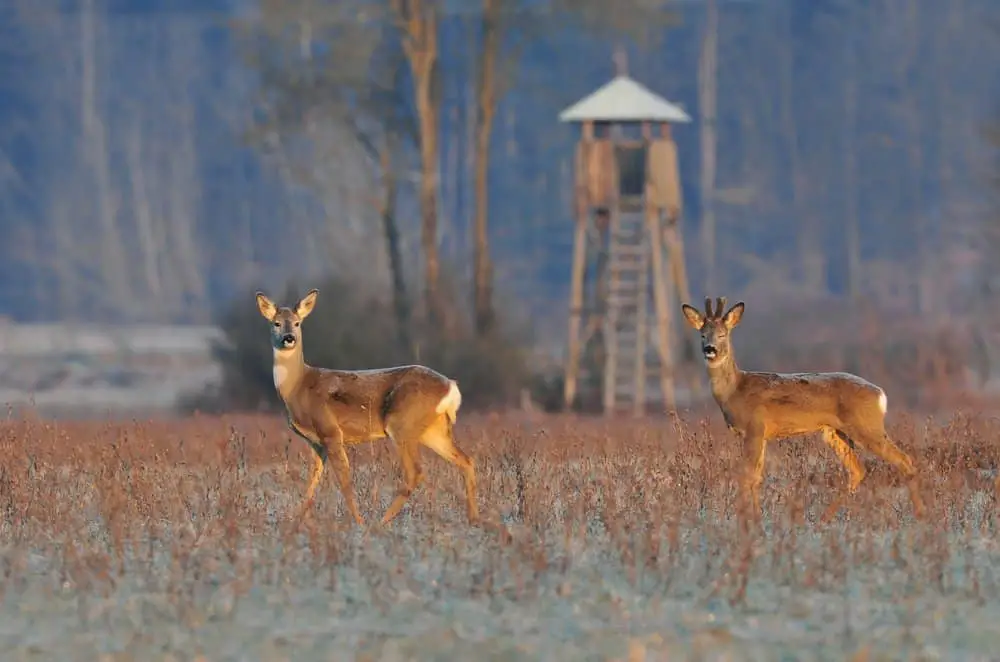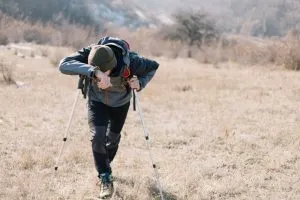When Are Deer Most Active? (For Hunting)

I spoke to my friend John recently, who I met on one of my recent hiking excursions. Turns out, he’s also an avid deer hunter. Out of curiosity, we discussed the best time to go deer hunting and when are deer most active. He told me that deer are most active in the early morning and late evening. I was a bit surprised because I had typically always seen deer throughout the middle of the day. So, just like anything else, I researched, consulted with experts, and went the extra mile to learn all about it. We also covered a few other topics related to deer hunting, which I’ll be sharing in this article as well.
Throughout time, hunters worldwide have been trying to get a leg up on the behaviors and movement of deer and other wild animals. And while there have been thousands of studies to show patterns in deer behavior when it comes to different factors such as time of year, weather condition, landscape topography, and so on, there still remains a level of unpredictability when it comes to a deer’s actions in nature.
Many hunters will claim that they have the deer hunting game all figured out but then are quickly humbled. The animal they thought they knew so well behaves entirely out of their expectations.
Despite the foundational unpredictability of animals in the wild, such as deer, there are tried and true methods that work. We’re going to go over the best time to go look for deers, the best time of year, and more, all according to hunting experts.
Quick Links
What months are deers most active?
Deers tend to be the most active during springtime when vegetation is the most abundant. During this time, they’ll come out of the woodwork more frequently to feed on all kinds of greens such as alfalfa, soybean, and whatever other delicious greens their natural environment offers. The deers will always take full advantage of the blooming swash of green, and this is when they will become the most visible for hunting.
Deers will also be most active during their mating season, or as hunters call it, “the rut.” This particular time typically takes place in Northern states during the latter half of November. Further down south, the breeding season runs slightly longer, sometimes extending as far as mid-January.
Big bucks during this time will typically have their guard down more during the rut, which will make it easier for hunters to spot them out. This is generally when most hunting trips are planned as the conditions are just right.
However, the post-rut reason is also an active time to spot deer and is a period that most nature enthusiasts and hunters will sometimes overlook. According to John – bucks and does alike are in a state of exhaustion from the spike in physical activity. They will likely be on the lookout to replenish all the calories just burned during the rut. This post-rut time also coincides with the coming of colder seasons, when the deers instinctively seek out more resources to prepare.
As the cold season approaches, deers will begin to herd up in large groups near the most accessible resource points for food and water. This time frame would also be an excellent opportunity for hunters to learn more about the area and how the deer traverse around it.

What time of day do deer move most?
So as it turns out, I was wrong, and my friend was right. Deers are typically the most active during the low light periods of the day, such as dusk or dawn. However, you can always spot deer moving around throughout the day, though it is less common. If you were to see more deer in the middle of the day, something has likely disturbed their regular routine, such as changes in the weather.
Deer are crepuscular animals, which means they are most active during twilight hours. This is likely because fewer predators are active during these times, so the deer feel safer venturing out and foraging.
How does weather affect deer movement?
Torrential rain patterns will often cause a deer to take cover until the rain passes. Still, light rain likely won’t significantly affect a deer’s pattern of movement. Deers don’t seek shelter because they’re afraid to get wet. They seek cover because the rain can substantially affect a deer’s sensory functions. Torrential rain will wash away the scent molecules in the air that deers need to alert themselves of surrounding dangers.
Another weather condition that will ultimately affect a deer’s movement pattern will be the surrounding area’s wind conditions. Some people claim it doesn’t have much effect. However, A seven-year study conducted by the Samuel Roberts Noble Foundation in Oklahoma found that where a deer travels is, in fact, affected by wind activity.
Like torrential rain, high wind activity can interfere with a deer’s ability to detect potential predators. So what do they do? They have to readjust their traveling plans to compensate and seek safer territory. In addition to interfering with their sensory function, the high wind will also cause a deer to become stressed. When deer are stressed, they are likelier to seek shelter instead of traversing the wild.
Lastly, dropping temperatures will also affect your ability to spot deer. Like any other animal in the wild, deer have an internal barometer that can detect pressure changes in the air. When cold weather is approaching, a deer’s internal barometer will tell it to look for as much food as possible before it gets too cold. This results in heightened deer activity and a higher likelihood of being able to spot one.
All that being said, ideal weather conditions for hunting deer would be during periods of cold weather, clear skies, and high wind velocity (but not too high). This combination of weather will be your best bet in sighting the most deer possible for your hunting adventures.
What kind of terrain are deers most active on?
The terrain of an area will also affect deer activity. If you’re an experienced hunter, you will most likely have a topographic map of the area, giving you the upper hand in scouting out for the most deer.
Deer tend to prefer high ground because it gives them the best vantage point. At high points, they can scout out the terrain and make plans on how best to travel. Most of the time, deer will prefer to travel on terrain with the least resistance path.
When you’re in an area with more hills, deers will often prefer to travel through the saddles or the low points of the hilly regions. This way, they spend less energy; who can blame them! To spot a saddle, take a look at your topographic man and look for figures that look like two bullseyes on a map that form a rough figure 8 shape.
If you’re looking for bigger bucks, ridge ends in the landscape your hunting will likely bring you considerable success. When hunting around a ridge end, it’s important to remember that the direction the ridge is facing is vital to your hunting success, alongside the wind conditions the day you decide to go out for the hunt.
Bucks bedded on ridge ends will typically face the opposite direction of the wind when resting. Their eyes will guard their front, and their sense of smell will protect behind them. Numerous tightly spaced contour lines will indicate this topographical feature.
According to John, plateaus can be a gold mine for hunting deer but are often overlooked by the average hunter. On your topographic map, you can recognize a plateau by looking for a rounded rectangular or oval shape filled with white space and surrounded by tightly spaced lines.
While they are the rarest topographic formation in wild country, if you do ever get the chance to come across them, it’s more likely than not that you’ll see an abundance of deer activity. Plateaus are often rich with food and shelter for deers and sometimes have ponds. If you want to make the most out of hunting around a plateau, determine what food sources are available in the surrounding area. This will ultimately determine your hunting success.
Conclusion
These are only some of the many techniques used in getting the most out of hunting adventures. If you’re planning on hunting deer, you should feel more confident in getting out into the great wild and spotting some big bucks!






